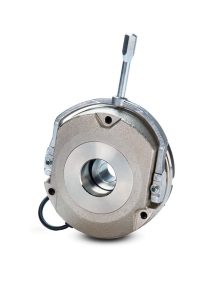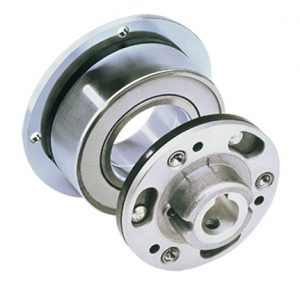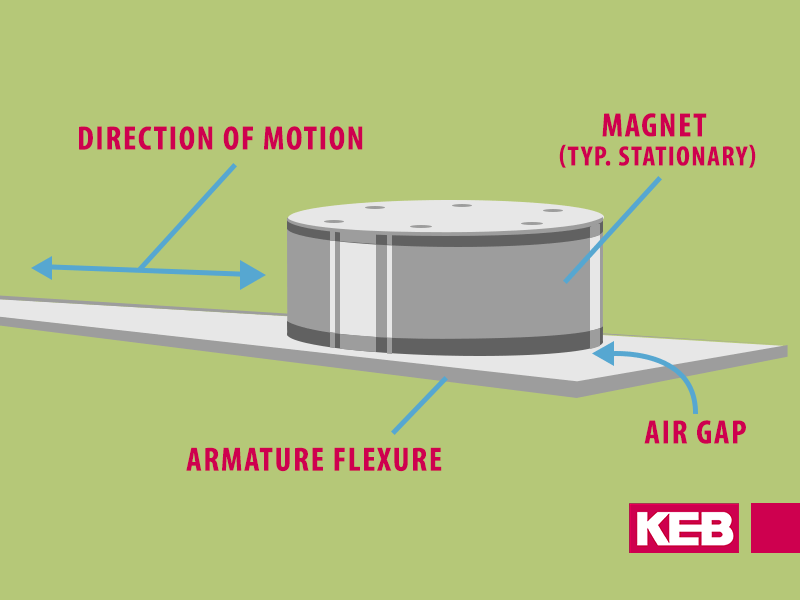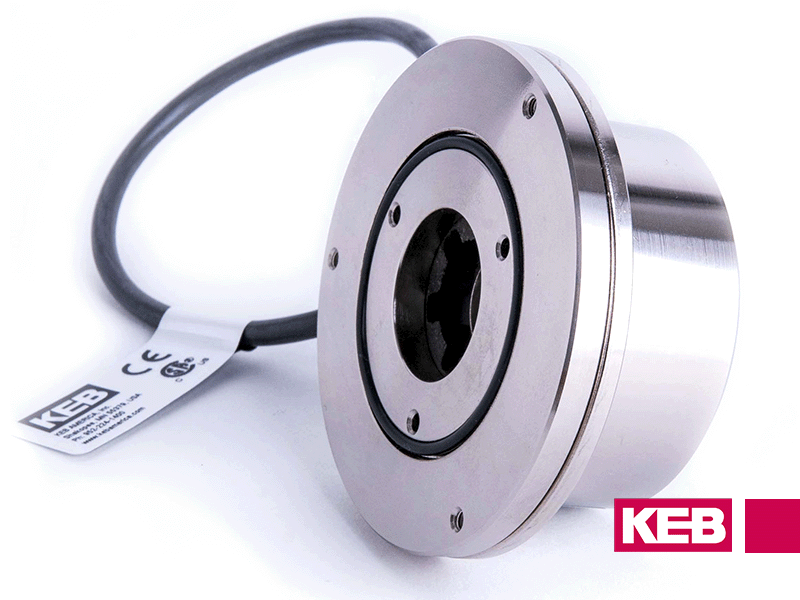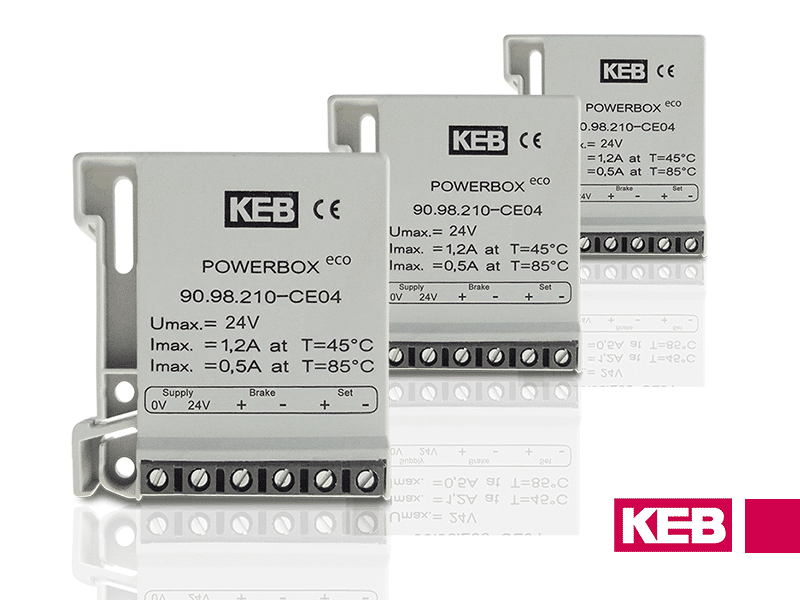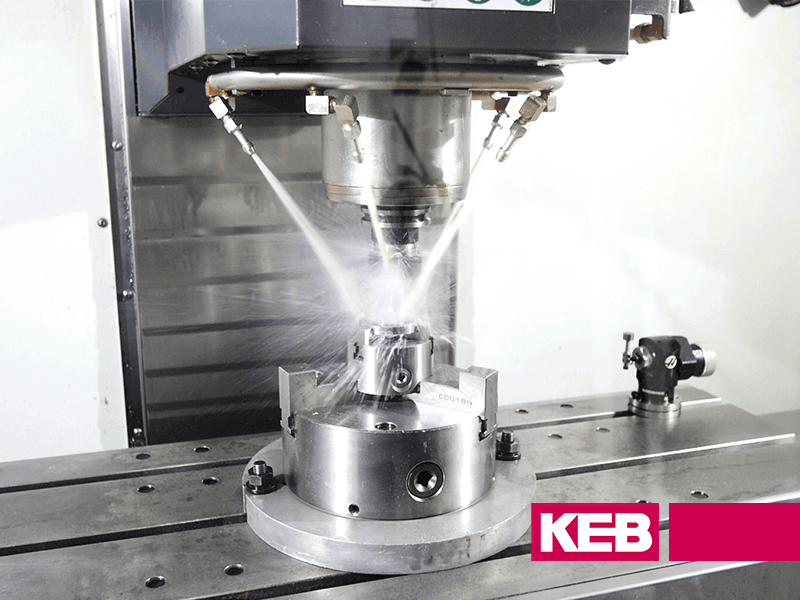Over time, technology advancements have allowed robotic arms and mechatronic systems to shrink in size. The reduction in footprint sometimes requires a low-profile or “pancake style” brake technology. This post describes the prevailing brake technologies that are often used in robotic applications and KEB’s ability to provide low-profile brakes in the spring-set brake designs.
Brakes in Robotic applications
To review, there are two reasons that brakes are used in robotic applications. First, the brake is used as a holding brake. In normal operation, the brake is engaged at zero speed and used to hold the arm or mechanism in place.
The second purpose of the brake is to dynamically stop and hold position in the event of power loss to avoid harming nearby operators or equipment. There are two KEB product options when selecting a power-off brake for these types of applications, permanent magnet brakes, and spring-applied brakes.
Permanent magnet brake technology is attractive because it offers higher torque density (torque per diameter) compared to spring-applied technology. PM brakes also offer zero-backlash performance. Spring applied technology, however, is the only true fail-safe mechanically engaged solution available. In applications where safety is critical, a fail-safe solution is often non-negotiable. Some examples include an AGV or forklift operating on a production floor with employees walking about, a medical boom in ICU rooms holding expensive and dangerous medical equipment in close proximity with patients and doctors or a robotic pick and place arm on an assembly line.
Related Video: Electromagnetic Brake & Clutch Manufacturing
Low Profile Designs
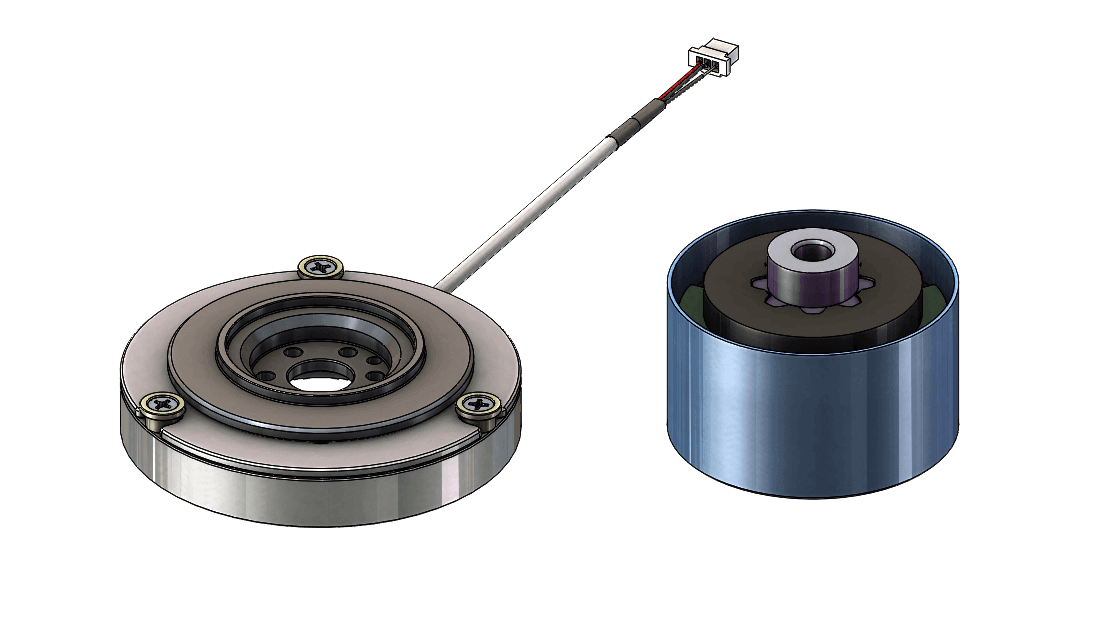
KEB has acknowledged the increasing demand for compact spring applied brakes and has successfully designed custom low profile brakes. This style of brake is functionally identical to our standard spring applied brake (see how they work) but achieves the same rated torque in roughly 2/3 the thickness, which allows for highly compressed drive system braking in robotic joints, AGV’s, forklifts and so on.
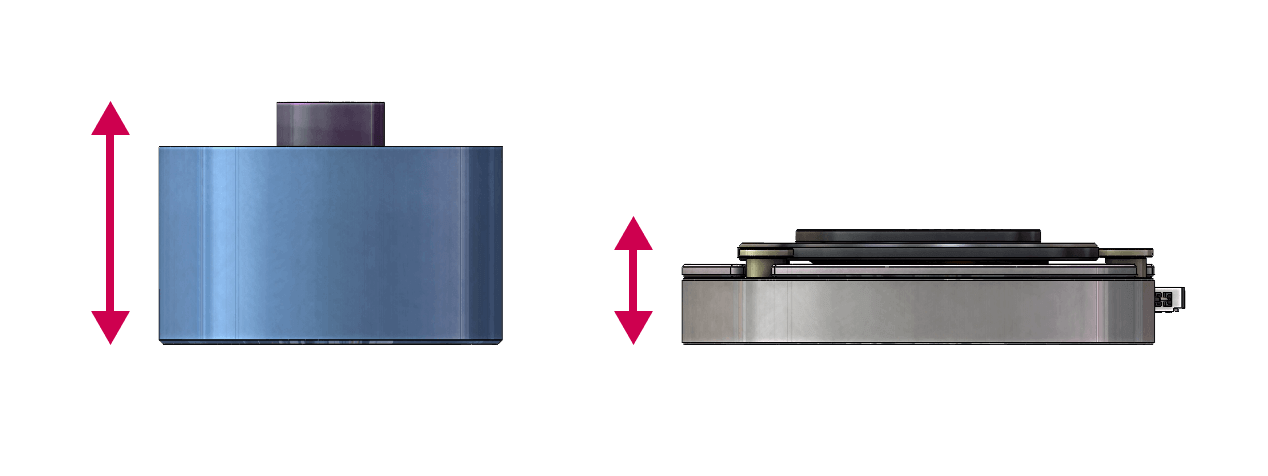
KEB America has full design, R&D and manufacturing capabilities at our ISO9001:2015 facility in Shakopee Minnesota. This allows us to work directly with customer specific package constraints to design a custom solution around said constraints and simulate the magnetic properties to optimize performance.
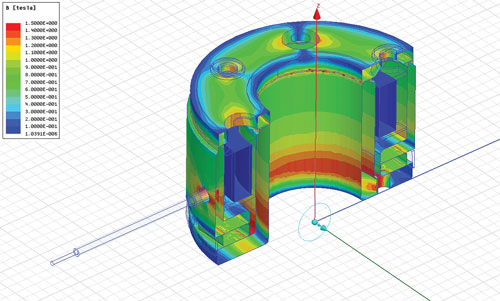
Other Common Options
In addition to the low profile designs, what other features can KEB design for? Common design options for compact robotic applications, include:
- Reduced holding voltage: After being released at nominal voltage, KEB spring applied brakes can drop to a holding voltage of 50% nominal. This is very advantageous for AGV, forklift or other mobile robotic applications where the power supply is a battery as power consumption is greatly reduced. This will also reduce heat generated from the brake coil. This is typically done with PWM controlled by the customer.
- Cable assembly and connectors: KEB can supply brakes complete with heat shrink tubing, wire jackets, pig tailed leads, cable labels etc. along with added connectors or plugs. This eliminates the need for customers to add cable assembly to their process and provides a plug and play ready solution.
- Custom coil voltages: Some batteries and control systems operate at voltages outside of our standard offering (24, 48, 105, 205VDC). KEB can design and wind a coil to any desired voltage.
KEB does not offer a catalog of pre-defined low profile brakes. Rather, our engineers can consult and create custom solutions that meet the application needs and footprint requirements.
Contact us today to discuss your application.
Let's Work Together
Connect with us today to learn more about our industrial automation solutions—and how to commission them for your application.
